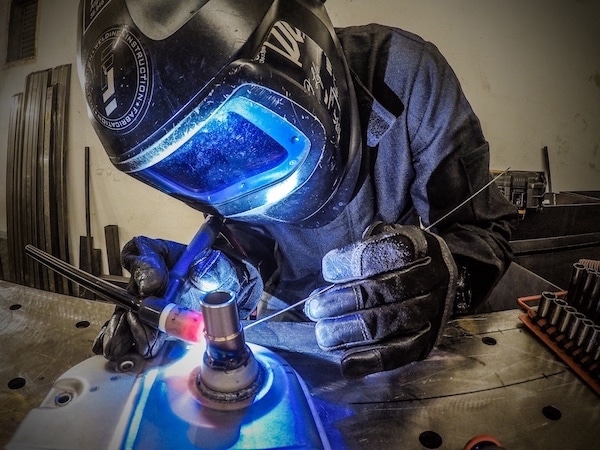What’s different about Welding Stainless Steel?
Stainless Steel is a popular material for building and other situations where durability and resistance to corrosion is imperative. But Welding with this metal does pose some unique challenges. These challenges must be considered before launching into a project with stainless steel. So what are the pros and cons of working with Stainless Steel and lets find out the best ways of welding stainless steel.

What is Stainless Steel?
Before we get started, what is Stainless Steel?
Stainless steel is an alloy of Iron, containing variable amounts of chromium. Chromium is what gives stainless steel its rust-proof reputation. The degree of chromium can vary from 11% to 30% with each variation. It is this ratio which makes the slightly different chemical attributes, that influence how the metal performs.
Stainless Steel’s ever growing popularity is always in the news. It’s strong and is resistant to many types of liquid, gases and chemicals. Not to mention weather and human wear. It takes a lot to tarnish and it performs well many, many applications. In fact, because many stainless-steel grades can withstand extreme hot and cold temperatures, it’s a popular material of choice for pipes and other heavy industrial uses. Even Restaurants, Brewers, Wineries and Medical equipment companies depend on its resistance to bacterial growth. This of course makes it a safe choice for food prep, medical needs and for transporting corrosive chemicals.
However, Stainless Steel is not a cheap material and can cost three to five times more than mild steel. When it comes to welding, all of the above advantages make Stainless Steel a somewhat tricky choice for several other reasons.
Too hot to handle!
Stainless steel retains heat better than many metals, which makes welding it a bit harder, especially for an inexperienced welder. With excessive welding heat, stainless steel can warp from high temperatures, even bending and distorting during the cooling process. It also shows up every blemish and scratch mark that’s left behind. In short, stainless steel is not very forgiving when it comes to hiding mistakes, so is always best left to the experienced welder.
How should you weld Stainless Steel
There is no definitive method to weld this metal. It really does come down what you are trying to achieve. Stainless steel is often welded with shielded metal arc welding (MIG), gas tungsten arc welding (TIG) and stick welding. Each of these methods will yield a slightly different result.
What is important is the welder’s skill level. Stainless Steel Welding is not advisable for the novice. Aesthetics is another crucial consideration, including bead appearance, the thickness of the metal plus the costs and timing factors of the project. When used for creating art, the finesse of TIG welding is desirable. But where a fast and efficient outcome is required, then MIG welding is often the better choice.
What to prepare for
Before welding, a particular set of tools just for prepping and cleaning is required. This is because Stainless Steel can get contaminated by normal carbon steel. In fact, if any of your tools have carbon steel residue on them and then contact the stainless steel, even tiny amounts will become embedded and cause it to rust.
Yes, Stainless Steel can rust. Contrary to popular belief, it is not infallible.
Of course, under normal conditions, stainless steel withstands all types of corrosions. However, in extreme conditions or poorly prepared, stainless steel can rust. Rust happens when the chromium oxide layer (the very thing that protects stainless from rusting) is destroyed or depleted. This may happen during the welding heating or cooling process.
Even with the accuracy of TIG welding, rust can be a real issue when welding with stainless steel. This is why cleaning and prepping your stainless steel is so important. As long as it is properly cleaned and prepped, the chromium oxide inside the stainless steel acts as a protective seal against rust, even when welding. It even helps the metal heal itself from discolouration and permanent marks.
So is it worth welding Stainless Steel
Welding stainless steel comes with many benefits. It does have its challenges though, so as long as you factor those limitations into your process, the end result will be worth it. For the inexperienced or novice welder, this process is probably best left to the professionals. Here in Melbourne, the team at Stainless Steel Projects can produce a beautiful, professional result that will make your project perfect.
Of course, if you have any questions whatsoever, please do not hesitate to call one of our experts.
